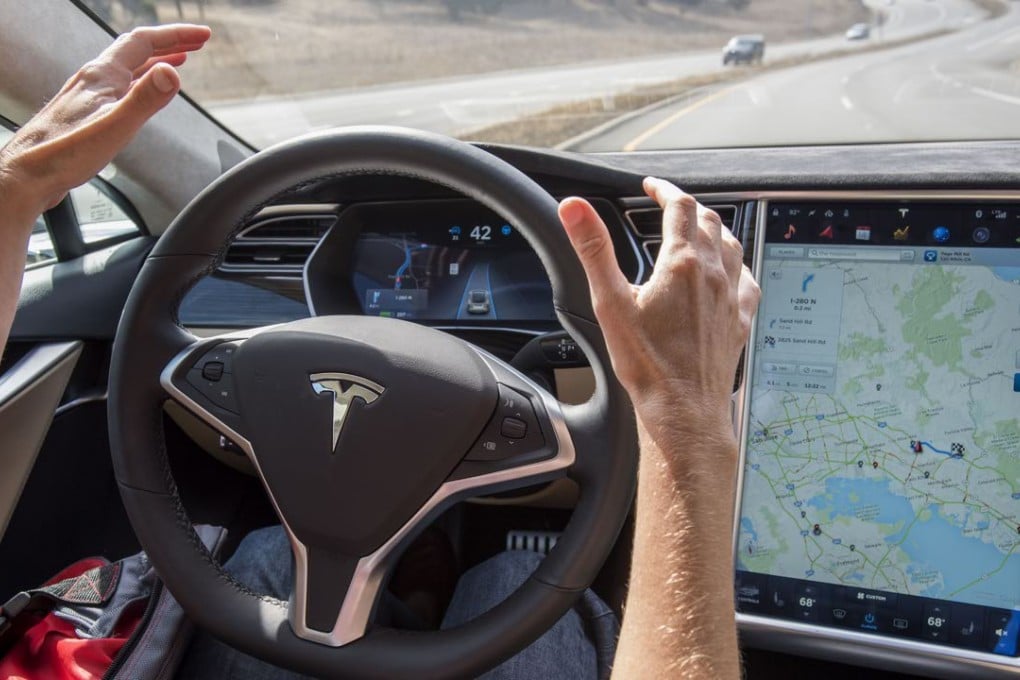Debate needed now on ethics and liability issues to get driverless cars back on Hong Kong roads
Franklin Koo says the tussle over whether Tesla’s new autopilot software should be allowed in Hong Kong highlights the concerns that must be addressed if the technology is to be used

WATCH: Can Tesla’s new ‘autopilot’ system work in crowded Hong Kong? The South China Morning Post takes it for a test drive
In the event of an unavoidable collision, the decision-making of an autonomous car would ultimately rest in the hands of programmers writing the algorithms. Consider a revised version of the “trolley problem” used in ethics discussion: a child suddenly dashes onto the road, forcing the self-driving car to choose between hitting the child or swerving onto an oncoming truck in the other lane. With an autonomous car, the manufacturer now has the responsibility of planning such a scenario beforehand, as opposed to a person making a split-second decision. The algorithms, which decide how the car will behave, should be regulated to ensure it reacts responsibly. Jean-Francois Bonnefon at the Toulouse School of Economics in France suggests that the algorithms will need to accomplish three objectives: be consistent, not cause public outrage, and not discourage buyers.

Keeping it simple could avoid the ethical dilemma altogether. A project called CityMobil2 tests automated transit vehicles in various Italian cities. The vehicles simply follow a route and brake if something gets in the way.
READ MORE: Insurance a legal grey area in Hong Kong for all-electric Tesla car’s new Autopilot system
Algorithms are so integral to an autonomous car that liability may shift from the traditional role of the driver to the manufacturer. Nonetheless, increasing liability may be premature since the use of autonomous cars could save lives.
According to the World Health Organisation, about 1.25 million people die on roads worldwide every year. It is hoped that autonomous cars could significantly lower the number of fatalities, since, unlike a person, self-driving cars never get tired, drunk or distracted, and can foresee the traffic based on radar. Burdening the automaker with additional legal liability at the outset would only slow development of the technology.

The legal position is currently unclear for autonomous cars. Hong Kong law does not yet make a distinction between an autonomous car and one driven by a person in its Road Traffic Ordinance. However, the commissioner for transport does have the power to ask Tesla to disable its autopilot software. Currently, there is no legal framework even at an international level.
